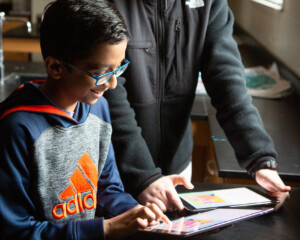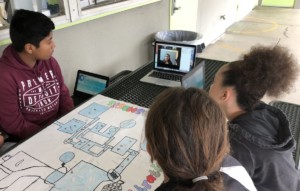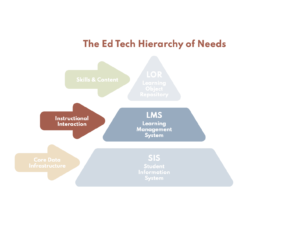What is the Most Promising EdTech For Emerging Economies?

Acumen raises charitable donations to invest in companies to produce and scale public benefit. The global nonprofit organization, founded by Jacqueline Novogratz in 2001, has been active in helping businesses grow across many sectors including agriculture, energy, health, housing, water and most recently education.
“Two years ago, a group of us began searching for education investments in emerging markets,” said Head of Sector Strategies Ankur Shah. Acumen is putting philanthropic capital to work to low income communities, to “close the gap between access, quality, and affordability to generate pathways out of poverty for millions.” And, “We want scalable investments,” said Shah.
Acumen has made two education investments in India, a preschool (Hippocampus Learning Centres) and a vocational school (Edubridge). (Impact investing is getting more common in the U.S. as well, as evidenced by the recent Dell Family Foundation investment in MasteryConnect.)
Shah is circumspect about the opportunity for impact for several reasons. First is the lack of basic infrastructure in a low income market–electricity and broadband in particular. Second, given the size of the challenge, the talent pool is thin making it difficult to rely on talent intensive approaches. Third, parent expectations can be unrealistic in terms of what a low cost school can do for them and their view of quality is dominated by outcomes at grade 10 test.
With this somewhat bleak assessment, Shah wonders if “we may need to think of tiered system of education with a focus on basic literacy” for the very poor. On one hand it is discouraging that it may be a generation before there is broad access to quality education in India, but on the other hand there are promising approaches like Bridge International’s effort to develop good schools for the world’s poorest neighborhoods. Shah certainly thinks so: there are over 250,000 private schools in India alone, most of them charging as little as $20 per month. In fact in some cities, more than 50% of families opt to send school going children to private schools, leaving public schools empty. This might present an opportunity to speed the adoption of innovations.
While there are more than 860 million cellphones in India–70% penetration–but the majority only support SMS messaging. Bridge International has demonstrated that SMS phones can be used to support enrollment and payment in low cost private schools in Nairobi. While India’s leadership is focused on wiring the 265,000 panchayat (town halls) it will be a while before broadband is close to universal. Shah was tracking U.S. smartphone penetration and was well aware that John Danner had left Rocketship to develop a mobile learning platform.
Shah wondered what I was excited about. I mentioned that in the second half of this decade I anticipate low cost tablet bundles and blended formats will extend access to quality secondary education to young people in emerging economies.
The elementary innovation I mentioned to Shah was adaptive instruction, like i-Ready and Dreambox, and game-based learning, like ST Math–all used by Rocketship, the high performing San Jose network.
I also connected Shah with Seth Weinberger from Innovations for Learning who’s “literacy system is being deployed with good success in Rwanda, Ghana and the Dominican Republic.”
My second Skype call with an Indian investor was with Sandeep Aneja from Kaizen, a leading education investment fund. Like Shah, Aneja is not optimistic about India made tablets (you may recall the Aakash, announced in 2011, was supposed to be available for $35). He did think India’s competent content engineering companies could produce a productive bundle on a Chinese tablet.
Aneja also thinks low cost private education is yet to make a big impact in India (the way Bridge International has in Africa). “We haven’t been able to develop private equity strategy in low cost space.” Interestingly, he’s bullish on hands-on learning like low cost science kits.
What it means. The fact that I had back-to-back calls with Indian edtech investors is slightly anomalous but the growing interplay between U.S. and Indian edtech sectors is worth watching. Tablet bundles like Amplify will become more common in both markets. Content will get smarter and become cheaper. Mobile penetration is already high enough among low income families (92% at Rocketship) that it will soon become a game-changer in learning in the U.S. and India is not far behind. Blended formats will boost achievement in the U.S. and extend access to quality in India. Low cost literacy apps are bound to help boost early literacy in both countries.
India is no longer just a backroom for developers. We’re seeing more U.S. educated Indians return home as savvy entrepreneurs and investors. Kaizen backed a startup online learning platform, WizIQ, that is gaining traction in the U.S. With smart impact investors and a growing edtech sector, it won’t be the last education import from India.
Bridge International Academies and MasteryConnect are portfolio companies of Learn Capital where Tom is a partner. Curriculum Associates, MIND Research, and Dreambox are Getting Smart Advocacy Partners.








0 Comments
Leave a Comment
Your email address will not be published. All fields are required.